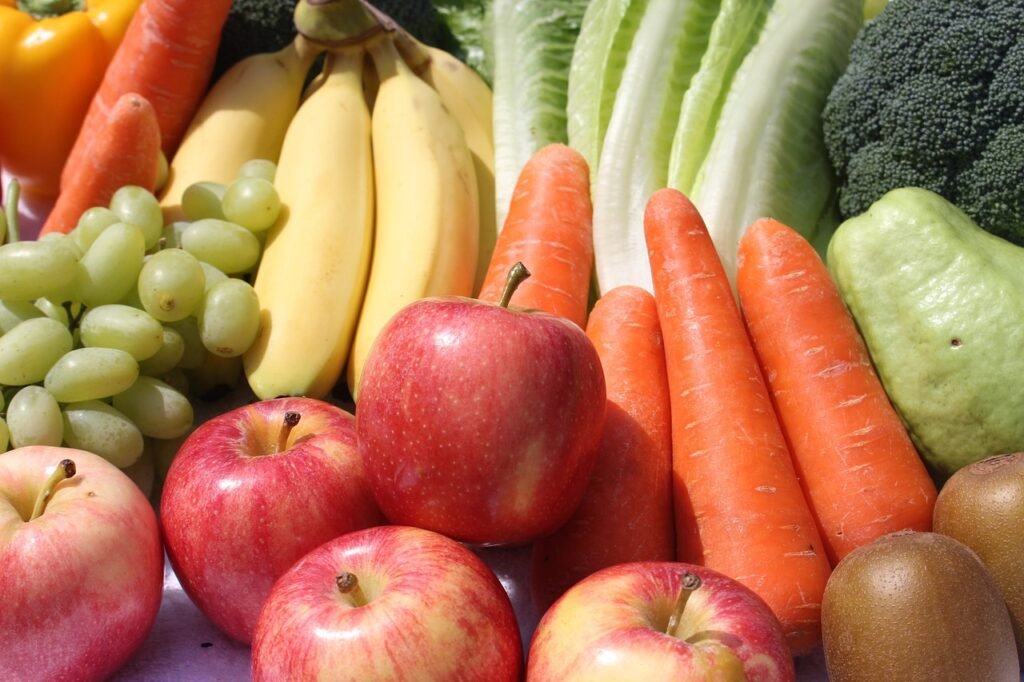The high cost of living is making it harder for people to manage their money. This often means cutting back on how much we spend on groceries each week. One thing that’s taking a hit is buying fresh Fruits and Vegetables.
Recent data from the Australian Bureau of Statistics (ABS) shows that Australians are buying less of these healthy foods compared to last year. The problem is likely getting worse because of the rising cost of living, and it’s already a problem.
Because, Australians don’t eat enough fruits and veggies. Health experts say that people nine years and older should have two servings of fruit and five servings of veggies every day for good health.

But in 2022, only 4 percent of Australians were eating enough of both fruits and veggies according to the ABS. Fruits and veggies are really important for staying healthy because they give us lots of vitamins, minerals, and fiber.
If you can’t afford to buy as much fresh produce right now, there are other ways to make sure you still get the good stuff from these food groups. You might find ways to eat even more fruits and veggies, even if you can’t buy as many fresh ones.
Frozen
People often say that fresh fruits and veggies are the healthiest option (remember the saying “fresh is best”?). But that’s not always true.
When fruits and veggies travel from where they’re grown to your kitchen, and then sit in your fridge, they can lose some of their nutrients along the way. On the other hand, frozen veggies might actually have more of certain nutrients like vitamins C and E.
This is because they’re frozen very quickly after being picked. How they’re transported and stored can make a small difference, but minerals like calcium, iron, and magnesium stay pretty much the same whether the produce is fresh or frozen.
Another good thing about frozen fruits and veggies is that they can help cut down on food waste. You can use just what you need at the time, so you’re less likely to throw away unused portions.

Getting Creative with Frozen Fruits and Veggies
Besides picking up frozen fruits and veggies from the store, you can also freeze your own at home. This is handy if you have extra from your garden or when produce is cheaper.
Before freezing, it’s a good idea to blanch the produce quickly. Blanching means dipping food briefly in boiling water or steaming it for a short time. This helps keep the produce safe to eat and maintains its quality.
Frozen veggies might not work well in salads, but you can cook them by roasting or steaming. They’re perfect for adding to soups, stews, casseroles, curries, pies, and quiches. Frozen fruits are great for breakfast with cereal or yogurt, or you can use them in baking fruit pies and cakes.
Preserved
Canned veggies and fruits are a cheaper option compared to fresh ones. They’re also easy to store. When food is canned, it’s preserved naturally, so there’s no need for extra chemicals like salt. However, some nutrients, like vitamin C, might decrease a bit because of the heating during the process.
If you’re cooking with canned veggies, add them later to keep more nutrients. If you have leftovers, you can freeze them to avoid waste.
Fermented veggies keep most of their vitamins and minerals from fresh ones. Fermentation can even make the food more nutritious. It creates new nutrients and helps our bodies absorb them better. Plus, fermented foods have probiotics, which are good for our gut health.

5 Ways to Incorporate Fresh Foods into Your Diet
While canned or frozen fruits and veggies are good options when you can’t get fresh ones, if you want to eat more fresh produce without spending a lot, here are some ideas
1. Purchase In Season
When you buy fruits and veggies that are grown nearby and are in season, they will usually be less expensive than ones that are brought from far away or are out of season.
2. Give Misshapen Fruits and Vegetables a Chance
Many supermarkets now offer “ugly” fruits and vegetables. These may not look perfect, but they’re just as nutritious and tasty as the pretty ones.
3. Cut Down on Waste
On average, a household in Australia throws away about A$2,000–$2,500 worth of food each year. Among the top five wasted foods are fruits, vegetables, and bagged salads.
Managing fresh produce well can help you save money and be kinder to the environment.
To reduce waste, plan your meals and shopping ahead of time. If you think you won’t eat your fruits and veggies before they spoil, freeze them.
